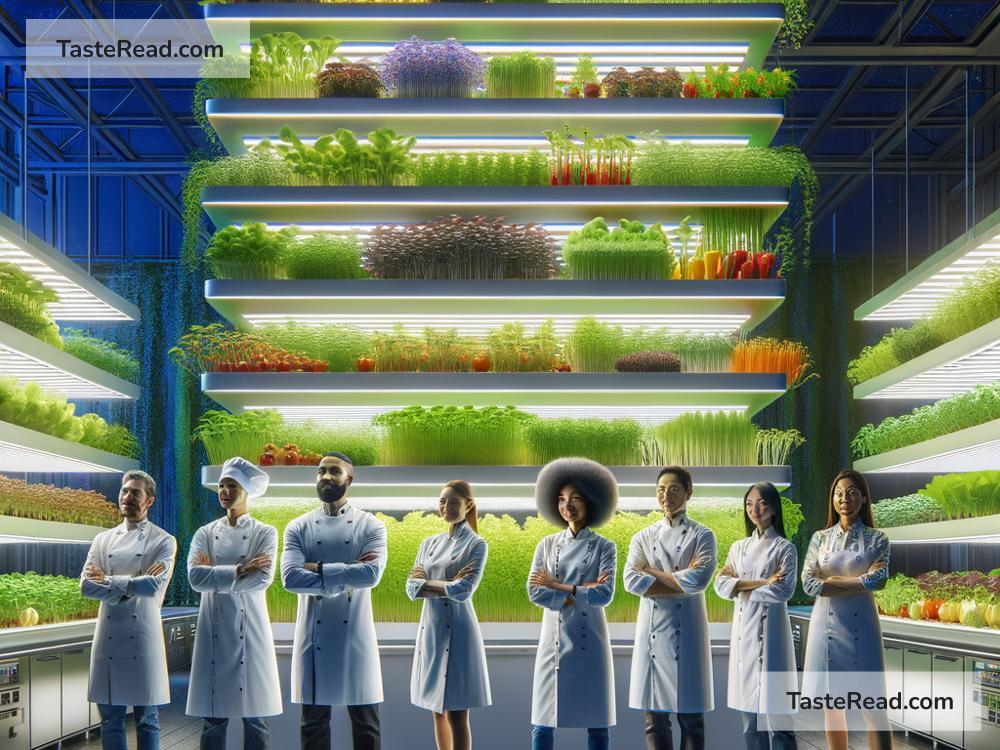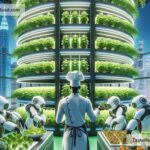The Future of Food: Building Solutions Through Collaboration
Food is one of life’s most essential needs. Yet, the ways we grow, distribute, and consume food are facing big challenges. Climate change, population growth, and food security concerns make it clear that we need to rethink how we feed the world. However, systems as complex as the global food system cannot be fixed by one person, organization, or country alone. Collaboration is the key to creating sustainable solutions that ensure healthy, affordable, and accessible food for everyone.
In this blog, we’ll explore how systemic collaboration—where diverse groups work together to solve large-scale problems—can transform the future of food in exciting ways.
Why Change Is Urgent
Over the next few decades, the world’s population is expected to exceed 9 billion people. Feeding everyone will become even harder due to factors like land degradation, extreme weather, loss of biodiversity, and declining water resources. Many of these challenges stem from climate change, which impacts not only the production of food but also its quality.
At the same time, diets around the world are becoming less healthy. Ultra-processed foods are dominating markets, leading to rising rates of obesity, diabetes, and other diet-related diseases. On the other hand, millions of people still face hunger and malnutrition every day.
The question is clear: How can we create systems that produce enough nutritious food for everyone without damaging the planet?
What Is Systemic Collaboration?
Systemic collaboration means people from different areas work together to improve connected parts of a problem—like farmers, scientists, companies, governments, and consumers tackling the food system together. No one can solve the future of food alone, but when we combine knowledge, skills, and resources, change becomes possible.
Transforming the food system isn’t as simple as developing a new product or adopting a new farming technique. Food systems are interconnected: agriculture affects the environment, transportation impacts accessibility, consumer preferences shape demand, and policies influence regulation. Only by bringing together all these areas can we create lasting solutions.
Ideas for Collaborative Change
Here are some exciting ways that systemic collaboration could reshape the future of food:
1. Regenerative Agriculture
Farmers, scientists, and policymakers are working together to promote regenerative agriculture practices. These methods don’t just grow crops—they heal the soil, prevent erosion, and restore ecosystems. For example, planting cover crops and rotating different types of plants improves soil fertility and protects against pests naturally. Governments and nonprofits can support farmers with funding and education to adopt these techniques, while scientists monitor their effects to refine better practices.
2. Alternative Proteins
Traditional animal farming uses a lot of land, water, and energy, and contributes significantly to greenhouse gas emissions. That’s why food companies and researchers have teamed up to develop plant-based meats, lab-grown proteins, and insect-based foods. These alternatives could provide all the nutrition of meat while being less harmful to the environment. Collaboration is key to scaling these ideas, lowering costs, and getting consumers excited to try something new.
3. Tackling Food Waste
Globally, one-third of the food we produce is wasted, from farms to supermarkets to households. Collaborative efforts are essential to fix this. For instance, apps connect restaurants with local communities to donate leftover food, while governments pass policies that make food donation easier. Retailers work alongside tech companies to monitor inventory and reduce spoilage. One big step forward is sharing knowledge—improving storage techniques and distribution networks to ensure food isn’t wasted before it even reaches people.
4. Educational Campaigns for Healthy Eating
Transforming diets requires more than just offering healthier food—it involves shifting perspectives and habits. This is where schools, health organizations, and media companies come into play. They can collaborate on campaigns that teach people about balanced eating, how to cook nutritious meals affordably, and the importance of limiting processed foods. When communities, businesses, and governments work together on education programs, they can inspire healthier choices for a brighter future.
5. Leveraging Technology
Technology, such as AI, drones, and blockchain, is opening new opportunities in agriculture and food systems. For instance, AI can predict crop yields and weather patterns, helping farmers make smarter decisions. Blockchain can trace food supply chains to ensure ethical sourcing and safety. Tech companies and farmers teaming up to share these tools could make food production more efficient, transparent, and accessible.
Challenges of Collaboration
Of course, collaboration isn’t always easy. It requires trust, coordination, and mutual respect between many different groups. Sometimes, people have competing interests—like farmers wanting better incomes while consumers demand lower food prices. Governments, businesses, and communities must stay focused on long-term goals and work on compromises that benefit everyone.
Another challenge is funding. Transforming food systems often requires upfront investment that may not show results immediately. Collaborators need to show patience while also finding reliable ways to sustain these efforts in the long term.
A Path Forward
The future of food will depend on how well we work together. Systemic collaboration isn’t just about solving today’s problems—it’s about creating sustainable solutions that can adapt to changing needs. By pooling expertise and resources, we can build food systems that nourish people, protect the planet, and offer fairness to all involved.
Governments, non-governmental organizations (NGOs), businesses, farmers, scientists, and consumers all have a role to play. Whether it’s supporting regenerative agriculture, reducing food waste, or adopting new technologies, every contribution matters. Together, we can create the future of food—one where innovation and community come together to ensure no one is left behind.
Let’s make this mission about more than feeding billions. Let’s also make it about building a healthier and more sustainable world for future generations.


